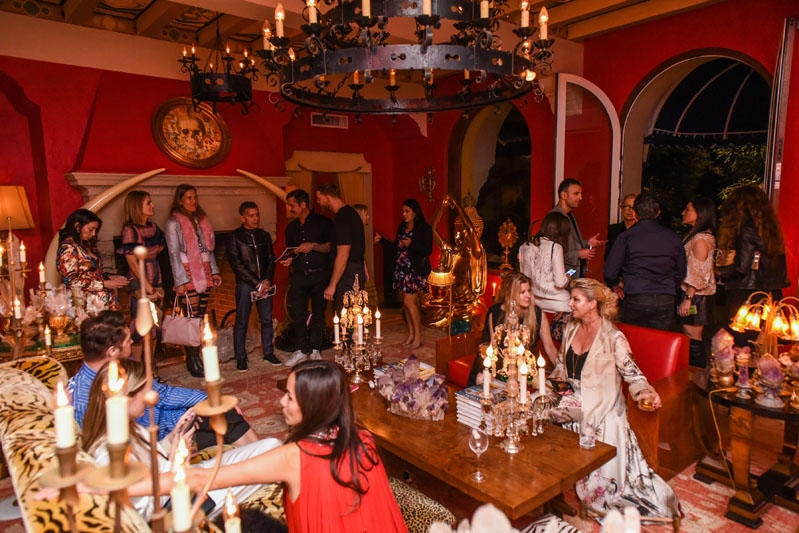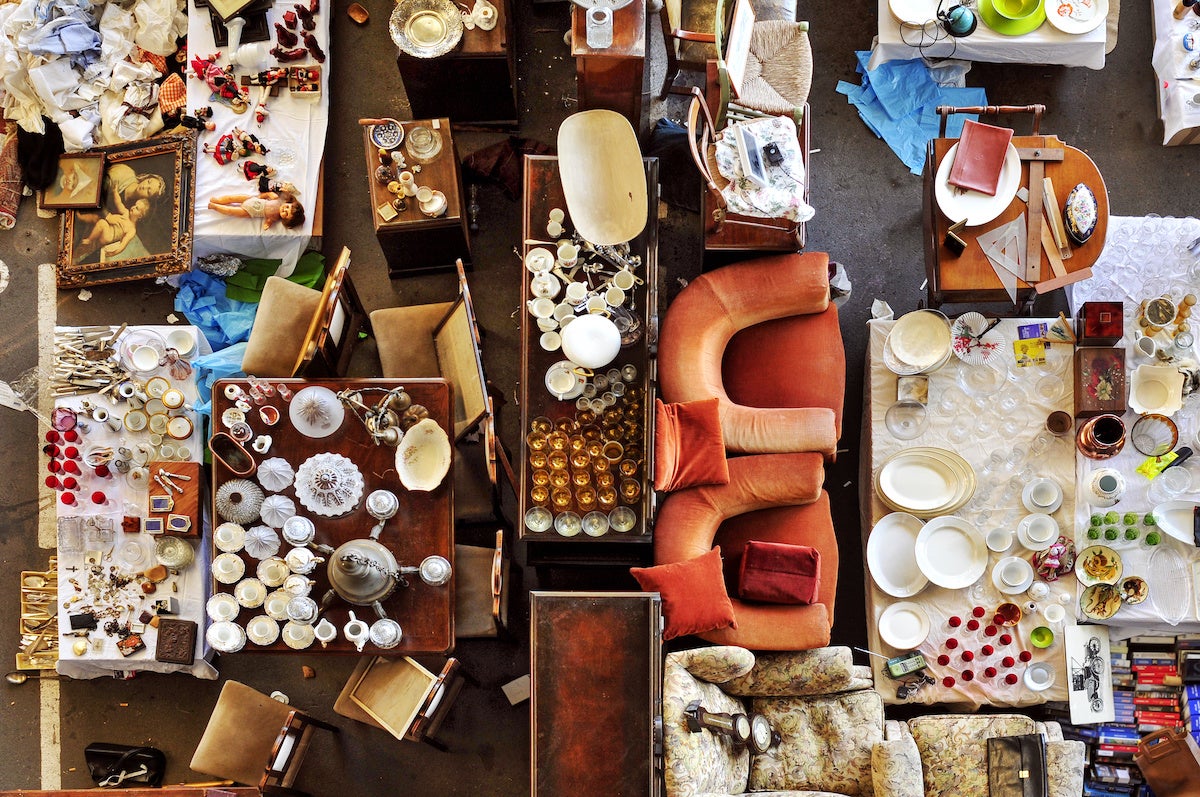Last month, Tampa, Florida–based designer Kim Levell walked into a local showroom and saw something that surprised her: an antitheft tag attached to a large fabric sample. Apparently, there had been a problem in recent weeks. Wallpaper samples and expensive swatches had been disappearing and were unaccounted for. In response, the showroom manager rearranged the inventory so everything was in plain sight and instituted the RFID system to keep anything else from slipping out the door.
“I have to admit, it made me feel almost naive,” says Levell. “I just never thought someone would do that!”
“That,” of course, is shoplifting, and Levell could be forgiven for her shock—it’s quite uncommon in the interior design trade. Hearing about her discovery sent me down a reporting rabbit hole to find out if petty theft has become a scourge of showrooms everywhere. The answer is: No, not really. Shoplifting either doesn’t happen much in the design industry or no one wants to talk about it. However, it’s not unheard of.

Probably the most common instances of theft occur when the doors of a cloistered world are thrown open and the public is invited in. Designer showhouses, crowded with guests and full of pretty baubles, make easy targets for casual thieves, and stories of little silver matchboxes that go missing on opening night are part of designer lore.
As a result, most designers take a few light precautions when installing a showhouse room. A common trick is using museum putty to affix small trinkets to tables and shelves. In a more complicated engineering feat, one designer told me about another who had created a tablescape in which all the place settings were surreptitiously wired together so that individual plates couldn’t be lifted. Often, an intern or assistant is dispatched to watch the room—they’re there to greet potential clients, yes, but also to keep an eye on the merchandise. Palm Beach, Florida–based designer Leta Austin Foster told me that for a recent showhouse, her security strategy was simple: “I sat in the room.” Surely not the whole time? “The whole time.”
Even with safety precautions, things disappear. To accessorize a recent showhouse room, Los Angeles designer Kevin Isbell brought a stack of his own vintage issues of Architectural Digest from the 1970s. By the end of the run, the pile had thinned considerably. “I had brought 20 or 30, and over the course of the show, I had maybe three left,” he says. Alcohol also seems to be a target. “Everyone who had a bar in their room, the liquor would go down.”
New York designer Billy Ceglia, something of a showhouse veteran, has encountered plenty of petty larceny over his career. “People have tried to take throw blankets under the guise of, ‘Oh, it’s a beautiful wrap,’ and you have to say, ‘Um, excuse me?’” he says. However, the most dramatic heist saw several valuable items disappear from another designer’s room, including an antique magnifying glass.
“Everybody was freaking out. All this stuff was missing, and it was like, How did someone have the gall to take all this?” he recalls. “As it turned out, one of the designer’s clients thought it was like a pop-up shop, and she was just putting stuff in her bag. She later emailed after the fact and paid for everything.”
The strange thing about theft from showhouses is that it rarely seems financially motivated—generally speaking, the audience for such events tends to be affluent, and what goes missing isn’t necessarily valuable. People seem to pinch from showhouses just because. “The joke I have is that if it’s a bad showhouse, people are disturbed that they paid $40 to get in, and they want something more,” says Ceglia. Ironically, sometimes what seems like fairly harmless theft turns out to be quite expensive. “One of the things that always goes missing is fake ice cubes,” he says. “People take them just for the novelty, but those happen to be $7 apiece, so it adds up.”
Theft from designers is one thing. Theft by designers is another entirely. It does happen, but the vast majority of the “taking without asking" falls in something of a moral gray area. By far the most common items to disappear from showrooms are fabric swatches and sample books, a situation that presents some tricky ethical calculus. After all, trade showrooms are typically happy to give designers samples free of charge. However, they like to know who is taking what. And while most fabric brands don’t mind handing out individual memos without much fuss, there’s a big difference between a tiny swatch of cotton and a large wing of silk velvet that later turns up as a throw pillow. (A side note: Sample pinching by civilians posing as designers does happen as well, and there’s an entire gray market of “designer fabric” pillows sold on Etsy.)
Is it stealing to grab samples from a showroom without asking? In general, surely not—most such “crimes” are the result of frustrated designers who can’t flag down a salesperson in time to make it to their next appointment. But when entire books disappear or a particularly valuable sample goes missing, the lines get a little blurrier.
There are examples of less ambiguous showroom theft as well. A former employee of a now-defunct multiline gave me a list of small (and not-so-small) items that had been nabbed from the showroom, including a faux-fur throw blanket, a Murano glass lamp, glass vases, lamp finials by the dozens, and loads of fabric display samples. “People would literally shove these things in their bags and abscond,” they told me.
In speaking with others in the trade, I got the sense that it was rare but not unheard of for pillows to quietly disappear, or for smaller pieces to be loaned out and never make it back. In general, it was viewed as a frustration, not a deep concern. One of the peculiarities of the design business is that every customer is so valuable (some showrooms survive on a small handful of repeat clients) that there’s not much incentive to aggressively police the aisles. For brands, it’s better to be permissive and take the chance of losing a few trinkets than to risk offending a designer who might keep their business afloat for years to come.
And again, to be clear: Larceny in the design world is uncommon. This is a trusting industry. And even if it wasn’t, it’s one made up of products that are objectively difficult to steal. Bandits plan jewelry heists, not custom-upholstery capers—hard to fit that rare chesterfield into the trunk of the getaway car or find a fence who specializes in toile.
“People do talk about security at Kips Bay,” says Isbell. “But it’s not like thieves are backing up a truck to the front door.”
Homepage photo: ©nito/Adobe Stock




























